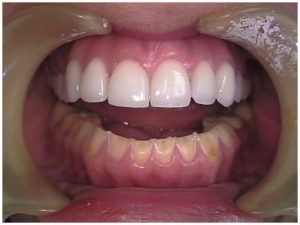Identify Symptoms Of Bulimia
 It is estimated that up to 24 million women and men of all ages suffer from an eating disorder.
It is estimated that up to 24 million women and men of all ages suffer from an eating disorder.
Bulimia, one of the most common eating disorders, is a serious mental illness characterized by frequent, recurring episodes of eating large amounts of food (also called binge eating) followed by purging, vomiting, excessive use of laxatives, exercising or fasting to get “rid” of the food. If left untreated, bulimia can cause death.
Who Suffers from Bulimia?
Up to 4 percent of women are affected by bulimia in their lifetime, according to the National Association of Anorexia Nervosa and Related Disorders (ANAD). While women are more likely to develop an eating disorder, up to 15 percent of those who suffer are men. Men are less likely to seek treatment for an eating disorder such as bulimia because they believe it is a “woman’s disease.”
What Are the Symptoms of Bulimia?
Symptoms of bulimia can include the following:
- • Overeating/binge eating: Recurrent, frequent overeating or binge eating episodes are followed by behavior that compensates for the overeating. Compensating is what makes bulimia different from binge eating disorder.
- • Throat irritation: An inflamed, sore throat can occur as a result of the excessive vomiting and purging. Salivary glands also can become swollen.
- • Dental problems: The enamel on teeth can become worn, resulting from ongoing exposure to stomach acid from vomiting.
- • Gastrointestinal problems: Issues like acid reflux disorder or intestinal distress can occur due to the abuse of laxatives. Severe dehydration also can happen due to the constant removal of fluids from the body.
- • Electrolyte imbalance: An electrolyte imbalance is caused when a person has too high or too low levels of sodium, calcium, potassium and other important minerals. It can lead to a heart attack.
Source: National Association of Anorexia Nervosa and Related Disorders (ANAD) and National Institute of Mental Health (NIMH)
 Eating Disorder Self Test. Take the EAT-26 self test to see if you might have eating disorder symptoms that might require professional evaluation. All answers are confidential.
Eating Disorder Self Test. Take the EAT-26 self test to see if you might have eating disorder symptoms that might require professional evaluation. All answers are confidential.